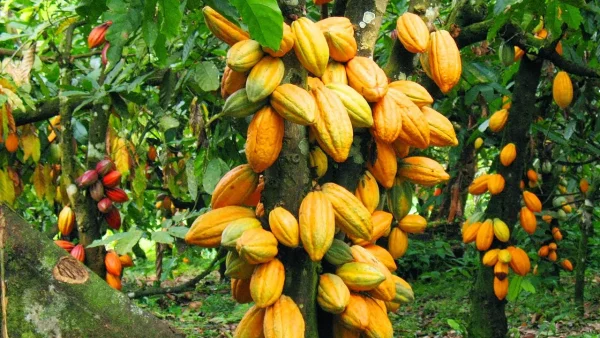Cocoa production is a big deal for Nigeria’s economy. It’s the country’s top agricultural export and plays a crucial role in its trade. Right now, Nigeria is the fourth largest producer of cocoa in the world, behind Ivory Coast, Indonesia, and Ghana. It’s also the third largest exporter, after Ivory Coast and Ghana.
Read more about Business
Cocoa has been important to Nigeria for a long time. In the 1950s and 1960s, it brought a lot of money into the country. At one point, Nigeria was the second-largest cocoa producer in the world. However, when the focus moved to oil in the 1970s and 1980s, cocoa’s relevance shrank. By 2010, cocoa only made up 0.3% of Nigeria’s agricultural income. Even so, Nigeria still produces a lot of cocoa—about 389,272 tonnes a year between 2000 and 2010, up from 170,000 tonnes in 1999.
How Cocoa Farming Started in Nigeria
Cocoa production in Nigeria began in the 1870s. The first cocoa farms were set up in Bonny and Calabar, but those areas weren’t great for growing cocoa. By 1880, a cocoa farm was started in Lagos, and more farms soon appeared in Agege and Ota. As more people learned about cocoa farming, it spread across Western Nigeria. By the 1890s, farmers in Ibadan and Egba land were trying out cocoa planting, and by 1896, farmers in Ilesha were getting involved too. The practice spread further to places like Okeigbo, Ondo Town, Ife, Gbongan, and Ekiti land.
Before 1950, Nigeria mainly grew two types of cocoa. The first was called Amelonado, which came from Brazil. These pods are green and turn yellow when ripe. The second type came from Trinidad and has red pods.
Sign up for the Connect Nigeria daily newsletter
How Cocoa is Grown and Traded
Cocoa trees grow best in areas close to the equator, where it’s warm and rainy. In Nigeria, cocoa is grown from seedlings in nurseries. Once the seedlings are about 3 cm tall, they’re planted in the fields about 3 to 4 meters apart. Most cocoa farms in Nigeria are run by small-scale farmers who each have around 2 hectares of land. However, big firms handle most of the exports.
Problems with Cocoa Production
Even though cocoa is important, there are problems in the industry. In the past, the government-controlled cocoa marketing through special boards. But in the 1980s, the World Bank and the International Monetary Fund suggested opening up the market. So, in 1986, Nigeria ended the government’s control and allowed more competition. Unfortunately, this didn’t solve all the problems.
Today, cocoa farmers face issues like old trees, low yields, diseases, pests, and outdated farming techniques. They often sell their cocoa through cooperatives or licensed agents, who then sell it to exporters.
Key Cocoa-Producing States
The main states that grow cocoa in Nigeria are Ondo, Cross River, Ogun, Akwa Ibom, Ekiti, Delta, Osun, and Oyo. These areas have the right conditions for growing cocoa and contribute a lot to Nigeria’s cocoa production.
Register to attend the CN Business Mixer
Final Thoughts
Cocoa production is still a big part of Nigeria’s agricultural sector and economy. While its global role has changed, it remains an important export. With the right support and improvements, Nigeria could strengthen its position as a major cocoa producer and exporter.
Featured Image Source: Premium Times NG
Got a suggestion? Contact us: [email protected]


